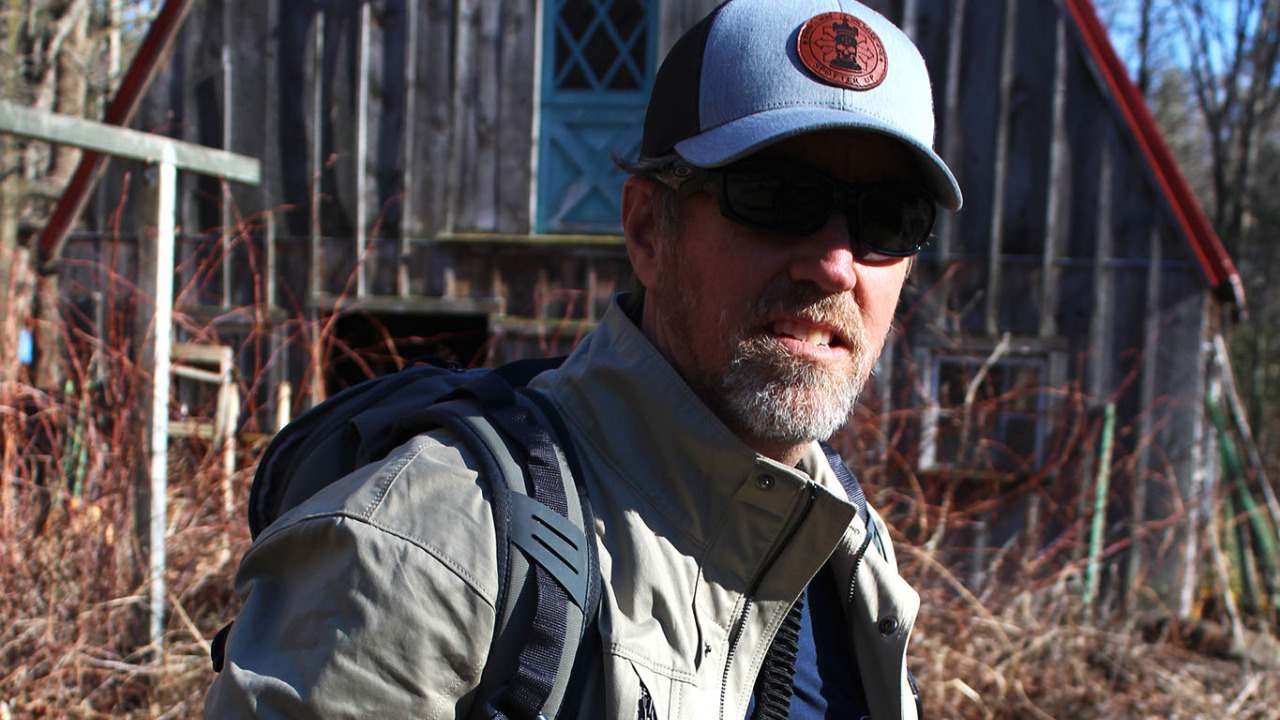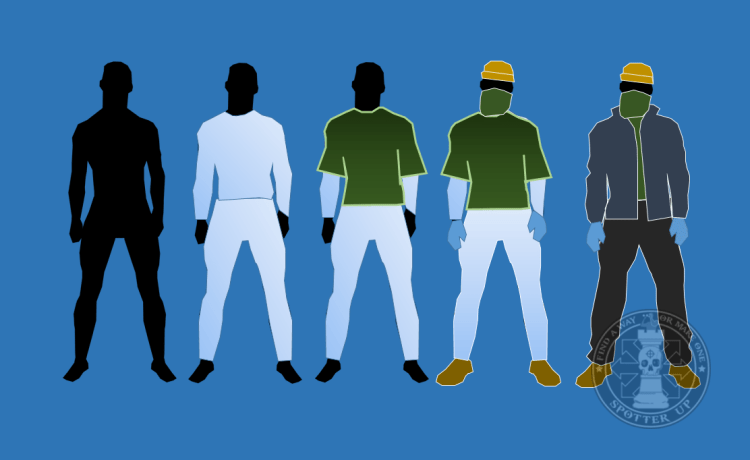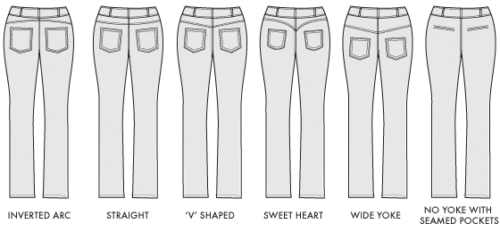Whether you’re going for a long haul in Yosemite or a short jaunt around the base of Mt. Whitney the trick is to always stay light weight with your backpack and what you wear. When buying gear ensure that it can work in most conditions whether it be a short summer hike or for long winter stomping in the snow.
A few of the things you should look for: A good hat, shirt, pants, long sleeve shirt and jacket, socks, footwear, hydration and a pack.
HATS
Baseball caps are a good choice for head protection if you are doing short hikes and for areas that get little sunlight. Don’t forget the sun still shines even if you hike under cloud cover. Try to get good sunscreen if you burn easily. Tree covered paths and canyons with shade will reduce your exposure to the sun’s rays. For longer journeys consider getting a cap that protects the tops of your ears, face, and the back of your neck.
Baseball caps don’t normally protect your scalp and top of your nose so consider something with a larger brim such as a boonie cap or a flap cap. I recommend going with a polyester model baseball cap like the Under Armour Stretch Fit Cap. It has a stretchy fabric, sturdy brim and fits snugly on your head; especially if you like caps with a tight fit. The polyester material allows the cap to breathe. If you prefer more air circulation, pick a mesh-back, such as a trucker baseball model. I don’t prefer caps with buckles or adjustable straps but that’s my personal preference.
Flap caps are baseball caps with cloth affixed to the back-end, kind of like a Kepi Blanc. These are great for protecting your ears, cheeks and neck. This is one of the best caps for sun protection. I recommend finding models that have neck straps so your hat doesn’t blow off your head. In the end, whether you go with a cap or hat, be sure to find something made of a durable material, no matter if its natural, synthetic or a blend.
FOOTWEAR
Many manufactures have already moved away from the standard old-school boot. Boots with too high of a profile heel are going to cause some rolling of the ankle despite the added support of the upper to support that ankle. To reduce the probability of this happening, make sure your military issue boots or hiking boot fits the terrain you’re going to hike on.
Buy a boot or shoe that matches the kind of walking you’re going to do. Why buy backpacking boots if you’re only going to be hiking? That’s a bit of overkill on your feet, so instead look at buying hiking shoes or hiking boots. There are many good trail running shoes that break ranks and could be called a hiking shoe because they tend to have a larger profile. Many trail running shoe break ranks and could be called a hiking shoe.
Second, make sure you have some type of aggressive multidirectional lugs. Lugs are the bumps on the outsole of a good boot or shoe and it gives the footwear traction. For mountaineering or backpacking try looking for thicker lugs because these are going to improve your grip. The wider the lugs or the more they are spaced apart will mean you can get good traction, Wider lugs also mean shedding mud easier and not getting debris caught in between them, such as stones, twigs, or branches. The image below shows another trail running shoe that can be used as a hiking shoe for short hikes.
Third, I recommend not buying online and instead going into a store with a good selection of outdoors footwear. You want to get a good fit. Keep these things in mind:
1. Low-cut shoes: These won’t give you the same roll-resistance needed to protect your ankles as boots do however they are good for lightweight travel. If you are carrying a light load and short-hikes get a pair if you need protection from debris, but aren’t going into aggressive terrain. These are the type that I prefer. Look for trail running shoes. They will be about half the weight of a boot. Some have a stiff medial shank built into the outsole to prevent twist and some do not. Find a shoe that is comfortable for you and the environment you are going into. Hiking shoes are more supportive than a trail-running shoe and lighter than a hiking boot.
2. Mid-cut boot: A moderate load on your back and a multi-day trip could mean your ankles are fatigued. Try something with a bit more material for ankle protection from the debris and also for added ankle-support. A wider outsole and lugs are good supportive parts of the shoe that are good for longer hikes when you get fatigued and help to prevent roll.
3. High-cut boots: If you’re going into rough terrain try and look for boots with good ankle support. These are also recommended for loads of 40 pounds+ or more. I like a boot with a pliable upper, and overall is not too stiff because it brings discomfort and can have added weight. I like to select something that protects against rocks, scree, and roots. Again, look for aggressive lug traction underneath. Hiking boot. Some hiking boots can have excessive weight. Look for boots that are comfortable. Boots should have a semi-pliable upper and give adequate protection from the elements. These boots have generous padding inside and are flexible.
For mountaineering or backpacking try looking for thicker lugs because these are going to improve your grip. The wider the lugs or the more they are spaced apart will mean you can get good traction, Wider lugs also mean shedding mud easier and not getting debris caught in between them, such as stones, twigs, or branches.
With hiking I prepare my primary gear for the area I will be hiking. To mitigate any injuries, I chose appropriate footwear for my needs. In my case, it will always be shoes over boots because they provide me with the best benefits. I encourage you to consider trying shoes to hike in. Keep your mind flexible with a willingness to change course. After all, isn’t that one of the concepts Spotter Up promotes?
SHIRTS AND JACKETS
Jackets for any season should be lightweight and not cumbersome. A good jacket will shield the user from the sun, cold and it will wick without feeling like a burden to wear. Fabric made with natural materials or blends are good in many environments. Jackets should have quality zippers in heavy plastic or a metal. Look for a garment that you can move freely in. Don’t leave home without a good rain jacket that uses advanced technology for wicking away moisture while preventing precipitation to get in. Ponchos are good for rolling up and shoving into your pack.
A base layer shirt or a long-sleeve shirt that wicks are great for most days. Try to find a loose fitting jacket or mid-layer that allows insulating air to flow between both layers. In Virginia hot days sometimes turn to cold, chilly days quickly. Outerwear should be selected smartly based on the environment you are trekking into because conditions and environments can change quickly in the outdoors.
To optimize your time in the outdoors, especially in colder environments, try layering your clothing. There are three prescribed layers to give you the best protection and comfort. Each layer of clothing has a function and when combined properly with other layers they in unison will provide you comfort and shielding. Layering allows you to avoid being too hot or too cold by adding or removing your clothing layers to achieve the ideal level of protection and comfort.
Weather conditions, our daily activity, and even our environment can change and so using a combination of layers will help you achieve the ideal effect. Adaptability is the key to achieving the best level of protection and comfort for the conditions. Simply, add or subtract your layers as needed. short-sleeve shirt leaves your skin exposed to the elements,
Base layer: The base layer is the layer worn closest to your skin. The main purpose of the base layer is to wick moisture away from your body during your periods of activity. It works to keep you dry and insulate you from the cold. To be effective it should be breathable while also being non-absorbent.
There are two main categories of base layers:
Synthetics: Synthetics are good because they are not itchy, are breathable, durable and dry very quickly. They are abrasion and wrinkle resistant. Some synthetics tend to collect odors faster than other synthetic materials or natural fibers but anti-bacterial agents are added. Synthetics are affordable and are moisture-wicking. Popular synthetics are polyester, polyethylene, microfiber and nylon. Manufacturers will often do blending. Nylon can be added for durability or cotton can be added for odor resistance but drying time could increase.
- Nylon: Nylon has more tightly woven fibers than polyester and therefore it doesn’t wick as well or dry as fast. It does not hold as much of an odor as polyester. Good for trekking pants. Long sleeve shirts or long underwear need vents cut into them if made from nylon because they don’t wick as well as polyester.
- Polyester: The most popular to use for base layering rather than nylon. It is excellent for use as a base layer because it is breathable, wicks moisture and dries fast but it holds an odor more than nylon or merino wool. I like to wear a poly, short sleeve t-shirt because I perspire a lot when I am wearing a backpack.
Natural: Wool layers and cotton layers are popular.
- Cotton does not have the wicking ability of most synthetics, does not dry quickly and therefore your base layer will remain damp and chilly after you sweat. Although it is comfortable on the skin it is recommended to use cotton only as a base layer for general wear but not for outdoor sports activities. Cotton will actually just trap sweat and moisture. You will quickly get the chills if you’re heading up a mountain and the temperature drops and you will feel uncomfortable to boot.
- Merino wool base layers are popular for their moisture-wicking and fast-drying properties but they do not dry as fast as synthetics. It tends to be odor-resistant and biodegradable as well although it might feel scratchy on the skin for some people, but not for most. Though it is more expensive than most synthetics it is an alternative to polyester. Potential to shrink, also remember that synthetic materials tend to collect odors faster than natural fibers. Merino wool is a good choice for any warm-weather hikes and cold too.
There are different weights of base layers and each has advantageous and disadvantages-Thicker fabrics will provide more insulation than the thinner fabrics. Keep in mind that the thicker fabrics will retain more water than the thinner ones and also dry slower. One flip side to the thicker fabric is it acts as a barrier to moisture building up against the skin.
Microweight Base Layer: Good for mild or cool conditions. Walking.
Lightweight Base Layers: Good for cool to cold conditions. Walking or hiking.
Mid-weight Base Layers: Good for cold weather and intermittent activity. Soccer, running, skiing and field hockey where you might stop and start.
Heavyweight Base Layers: Good for extremely cold weather and windy, sub-freezing conditions. Frigid temperatures.
Mid Layer: These are worn directly over your base layer and provides additional insulation. A base layer could be a light vest or a long-sleeve shirt. A lightweight wool pull-over or a long-sleeved polyester shirt can help boost your warmth while not adding a lot of extra bulk to your body. The idea is to remove layers if you get too hot. Using multiple thin layers allows you to adjust your level of comfort and warmth. Try to use a mid-layer that is looser than the base layer. A loose mid-layer allows insulating air to flow between both layers. They key is to trap heat.
Cotton, Wool, Down and Fleece are all materials that can be used as a mid-layer. Cotton is inexpensive but not ideal for the outdoors as you will need insulation. A better option is wool or down. Down is great for added warmth but it tends to be expensive, makes your clothing bulky and it dries slowly. A parka with down is a good provider of insulation. Wool is good for insulation even when wet. It does not feel wet even when wet. Fleece is lighter than wool and provides good insulation.
- Boots, waterproof and roomy for thick socks
- Cap
- Goggles for wind
- Lip balm
- Mittens or light gloves. Fingerless gloves are good if you are going somewhere with steep, rocky slopes.
- Neck Gaiter
- Scarf
- Sunscreen
Outerwear Layer: Outerwear should be selected smartly. The key is to cut out the wind and keep you dry. You can wear a light, rain repellent-shell or a heavy-duty waterproof jacket. This is the most important piece of your layering clothing because conditions and environments can change quickly in the outdoors. You can hike in snowy conditions that get very windy quickly or perhaps you begin hiking and then get hit by a heavy downpour. A good pair of light or heavy gloves are excellent for protecting the hands from sharp objects and cold conditions.
It is recommended to select good pair of pants and jacket. Select breathable and waterproof or water-repellent materials depending on where you plan to use them. Keep in mind to leave a bit of room within your outer shell for layering beneath. Purchasing outwear that is too small will not allow you to layer properly and your movement will be restricted.
Examples:
- Down jacket
- Leg gaiters
- Outerwear jacket with hood-waterproof or water-repellent rain jacket
- Outerwear gloves-waterproof or water-repellent
- Outerwear pants-waterproof or water-repellent
Get rid of that old military gear passed down to you from the WW II inventory your reserve unit issued you. Best time to buy is right after the Winter is over and stores are clearing out their inventory. It may take you a while to build a good closet full of usable gear but it’s worth it to be methodical about what you want versus what you need. Buy the best that you can afford and choose utility over style first. If you find both for a good price then go for it.
PANTS
Wearing pants versus shorts keeps your legs protected from hazards but its up to you. Seek out pants with reinforced knees for the moments you will kneel to read your map, gather firewood, or to take any kind of break from your journey. Shorts or pants with a gusseted crotch provides more room between the legs. A gusset is a piece of material sewn into a garment to strengthen or enlarge a part of it, such as the collar of a shirt or the crotch of an undergarment. The gusset allows you to stretch your legs without the pants or shorts riding up into your inner thighs, and provides much comfort.
Look for pants or shorts with a back yoke; most garments have them and avoid garments that don’t. The yoke is located directly below the waistband at the back of the pants where your butt fits. On most pants the yoke will form a ‘V’ shape; it can range from a deep ‘V’, to shallow to straight, and at times may not be present at all. The purpose of the yoke is essential in determining the shape and fit of the jeans. The differing shapes and depths give very different results as to how the pants will fit on the body. My legs and hip girdle are large from years of Olympic lifting and running and a pant yoke provides another level of comfort. See the illustration below:
the illustration above is from a woman’s jean guide but the concept is applicable for men too.
Triple and double needle top stitching gives your pants longevity. The more pockets the better the pants are for carrying things such as nutrition bars, passport, maps and any Every Day Carry (EDC) items. Look for a good zipper for quick access for the moments you are rushed, and for purposes of durability; no one wants a zipper that breaks on a journey. A button-fly closure is ideal too.
1.00” width belt loops with D-Rings above the welt pockets are good for using a large, sturdy belt. Sturdy loops allow you to affix d-rings and other items such as a holster, gun, and EDC items to your belt. Good quality has less of a chance of tearing when you take a tumble.
Whatever you choose, the key take away is the need for unrestricted movement. A gusseted crotch provides freedom of motion while the back-yoke enhances fit and eases movement. Bar tack reinforcements at critical stress points and triple needle stitching on the in- and outseam increase durability. Seek out ruggedness in your clothing. Reinforcements found at the pocket and knees, incorporate protection and at the pant cuffs reduce wear. You want accessibility. Lots of pockets including an outer thigh pocket means you can quickly stash your smartphone, radio, tools or 30rd AR-type magazine.
SOCKS
How do you select your socks? It’s going to depend on a few things. The answer depends on the kind of activity that you are going to perform, the type of foot shape you have, and the footwear you use.
- What are the best socks for my feet?
- Synthetic or Wool socks?
- Thick or thin sock?
- High versus a Low cut sock?
First determine what kind of activity you’re going to participate in: are you going to use it for hiking with boots, running with shoes or for walking with sandals? Hiking in boots might demand thicker socks that have good heel, calf support and forefoot padding.
Running in shoes might require that you find a good, lightweight fit that wicks moisture away from the foot and has arch support and foot padding. A sandal might require a standard sock that protects the feet from debris and chill, but doesn’t necessarily have to be a tailored fit such as the Injinji 5 toed socks. If you’re running in sandals, maybe a 5 toed Inkinji sock will work.
Also consider the elements outside. Will you be running in the snow? You might look for a sock that’s good for a cold day that is comfy, thick and warm (perhaps a Merino Wool) and won’t feel itchy.
You need to find the best fit for your foot. Make sure you’re fitted with the proper size sock-wear. You don’t want a sock too loose or it can bunch up under your foot or at the toes. And if it’s too small, it can compress the toes, and you get friction problems and lack of toe movement. Get your feet measured. Often, people who are not properly fitted end up in sock sizes that are too small or to big.
Also, make sure you’re fitted with the proper footwear. Good socks fitted properly on a foot while wearing poorly fitted footwear could still cause problems. Depending on the shape and health of your foot, you should consider all of the options, before buying a pair of socks. Some people may require a more padded heel and forefoot in their sock, while others are fine with a light weight model, without those same features.
There are so many options out there. It can be confusing. The majority of the top sock brands on the market should meet your sock needs. There isn’t a sock on the market that offers every feature but you can find some that are pretty close to your needs. In the end, a good fitting pair of socks and shoes can get you into some excellent hikes and have you thinking less about discomfort. Boot socks should certainly meet the same criteria.
IN SUMMARY
Gear designed for functionality and comfort will make the difference between staying focused on your journey or deciding to quit and turn back. Educated yourself about the garments you will wear on your trips. Make sure you are conditioned for longer hikes and break in your footwear. Test out your backpack and pack the load properly so it fits properly on your shoulders. Let someone know that you are hiking, where, and how long you expect to hike.











